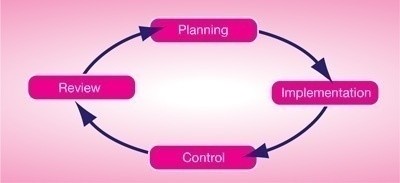Change is inescapable and needs to be handled effectively. To remain competitive Organizations need to always look for more efficient and effective ways to operate. As a result, change management is high on the agenda for many Organizations. Managing change involves a transition from A to B. As this takes place, managers need to handle the challenges that may come up during the process. At the front of this is the setting of change objectives. They then have to work out the best way to achieve these goals.

Every Organization is a complicated system so managing change is not always an easy process. For example, there will be a number of different interdependent parts affecting the whole Organization. Changes in technology could have an impact on working procedures, the structure of the Organization and its people. As leaders manage change, they have to manage the different inter-related parts of the Organization. The skill to manage these parts well is therefore a important skill for managers. Managing change involves making decisions at different levels. These include:
- Strategic decisions – major decisions affecting the whole of an Organization.
- Tactical decisions – at departmental level to work towards achieving change objectives.
The way in which decisions are communicated and carried out varies depending on the style of leadership or the culture of the organization. There are four main methods are:
- ‘Total imposed package’ which comes from the top, covering the whole Organization and is implemented in one go.
- ‘Imposed piecemeal initiative’ where change is imposed but in stages.
- ‘Negotiated total package’ where the aim is to seek a package of change via negotiations with the staff.
- ‘Negotiated piecemeal package’ where there is a gradual implementation of change through a series of negotiations with the workforce.
Communication plays an important role in the process of change. Managers and leaders need to identify effective communication channels through which to reach the appropriate stakeholders. This must happen at every stage in the change process. Employees need to understand the reasons for change. They may want to ask questions to be clear on how they can support the process of change. As planning takes place a time frame should be decided. Good communication ensures transparency when executing changes. This can help inspire employees as they feel included in the process. Controlling the process is important as it helps to reduce conflict. Reviewing the process ensures that change objectives are being achieved.


